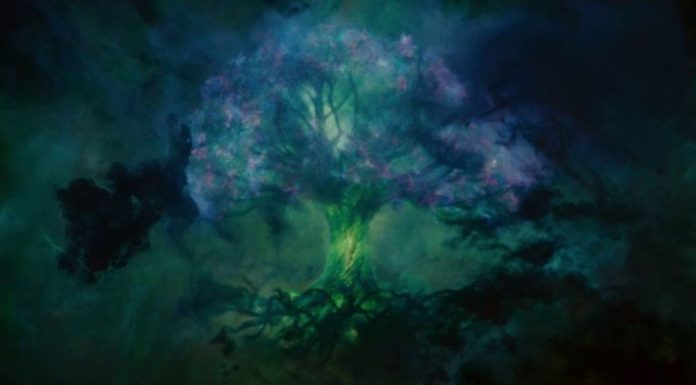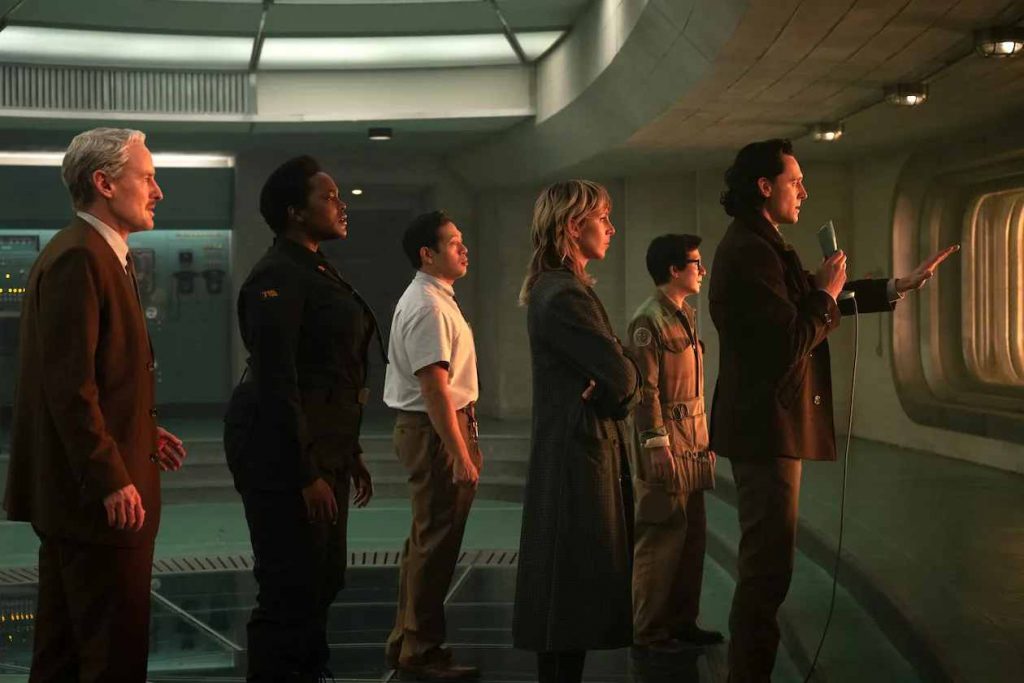Fans of Loki Season 2 Episode 6 are agog with anticipation and reflection after the exciting ending. The complex plot takes an unexpected turn as it integrates the idea of Yggdrasil, or the World Tree, into the Marvel Cinematic Universe (MCU). tvacute explores the epilogue and discovers the secrets surrounding Loki, the God of Mischief, as he struggles with fate, time, and the meaning of Yggdrasil.
Loki Season 2 Soundtrack: Which Song Plays in Loki Season 2 Episode 6?
What Is the Meaning of the Yggdrasil, World Tree?
In the Marvel Cinematic Universe, Yggdrasil, the World Tree, has frequently appeared in Norse mythology. It functions as the cosmic axis, traditionally, bridging the Nine Realms and allowing life and death to interact. The worlds were emphasized in Thor: The Dark World to be arranged vertically, like branches growing out of a tree.
In Norse mythology, Yggdrasil, the World Tree, is highly significant. Its representation in many cultural contexts, such as the Marvel Cinematic Universe (MCU), further deepens our understanding of this narrative.
According to Norse mythology, Yggdrasil is a massive, sacred tree that connects and envelops all of existence, acting as a cosmic axis. The term “Yggdrasil” originates from Old Norse, where “Ygg” is frequently connected to Odin, a prominent deity in the Norse pantheon. The roots of the tree reach into the domains of death, while its branches span the Nine Worlds, each of which represents a separate dimension. A common description of Yggdrasil is that it is evergreen and eternal, signifying the cyclical nature of rebirth, death, and life.
Asgard, the home of the Aesir gods, Midgard (Earth), Jotunheim, the home of the frost giants, Alfheim, the home of the Light Elves, Svartalfheim, the home of the Dark Elves, Vanaheim, the home of the Vanir gods, Nidavellir, the home of the Dwarves, Niflheim, the realm of ice and mist, and Muspelheim, the home of fire giants and demons, are among the Nine Worlds connected by Yggdrasil. The tree serves as a hub where these domains converge and have an impact on one another.
Yggdrasil is portrayed in the MCU as the cosmic framework that unites the Nine Realms, especially in Thor: The Dark World. The depiction of the realms as branches growing out of the tree highlights how interwoven the Norse universe is. The MCU’s visual depiction of Yggdrasil is consistent with the old Norse conception of him as the axis of reality.
But in Loki Season 2, Yggdrasil is interpreted in a different way. In the epilogue, Loki is shown to be at the center of the hallowed chronology, serving as the nucleus of Yggdrasil. This reinvention subverts the traditional interpretation, implying that Yggdrasil is an active force in the MCU rather than just a symbolic depiction. As the God of storytelling and the custodian of time, Loki makes Yggdrasil a dynamic and important component of the story.
In Norse mythology, Yggdrasil is essentially a symbol for the interconnection of all things. It represents the cyclical and intertwined aspect of existence and acts as a bridge between realms. Yggdrasil, a powerful emblem of the cosmic order that connects several realms and shapes the destiny of the worlds it connects, is found in both modern interpretations such as those found in the Marvel Cinematic Universe and ancient Norse legends.
Loki Season 2 Episode 6 Finale Recap
In the sixth episode, Loki is still trying to stop the approaching disaster in the timeline. The action takes place as he keeps going back to a pivotal point in an effort to save Victor Timely’s life. As the story progresses, Loki’s voyage through time transforms into an enthralling dance, demonstrating his resolve to discover a solution.
The pivotal moment occurs when Loki chooses to travel even farther back in time, to the first encounter between O.B. and Victor, the main characters in the disintegration of the chronology. Thor immerses himself in millennia of theoretical physics education in order to gain the information required to stop the approaching catastrophe. Even so, the celebration is fleeting, despite their successful launch of the multiplier into the temporal weave. A deeper investigation of the timeframes is made possible by the discovery that the branches are growing out of control.
Sylvie traces the mayhem back to the point when the timelines began to branch, realizing that it was inevitable. Loki is prompted by the revelation to reexamine his meeting with the mysterious man known as He Who Remains at the end of time. The scenario becomes more complicated as Sylvie proceeds with her decision to remove He Who Remains.
The idea of the loom serving as a safeguard to eliminate undesired branches and maintain the Sacred Timeline is introduced by He Who Remains. Loki struggles with the brutal truth that he will always lose, regardless of how hard he tries. Loki makes the audacious choice to destroy the loom in order to defy fate, which has far-reaching effects that potentially jeopardize the Sacred Timeline.
In a captivating scene, Loki travels back in time to face Agent Mobius at the opening of Season 1, Episode 1. The moving exchange examines the responsibility of making decisions about who survives and who dies. An important turning point occurs when Loki becomes God Loki and faces the collapsing timelines, showing up as the unanticipated hero.
A new era begins as Loki gathers the fading branches and converges them at the end of time. The God of Mischief takes up the position of timekeeper, indicating a significant change in the MCU. The scene after the explosion presents fascinating possibilities for the future, with histories intertwining like a tree called the Yggdrasil, World Tree.








